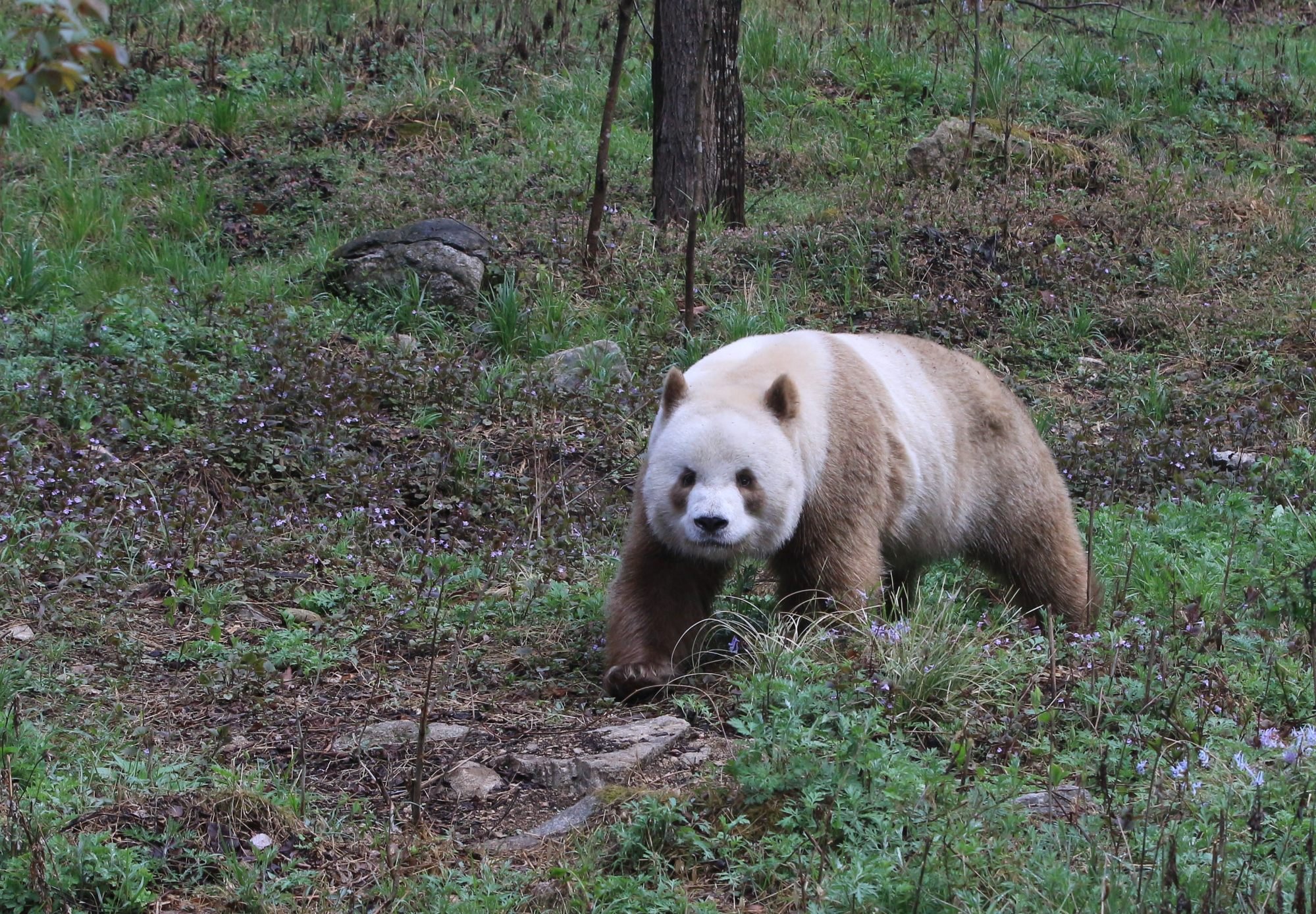
‘A brand-new discovery’: Chinese scientists uncover genetic secret behind brown pandas
- Researchers find genetic mutation in pigmentation-linked Bace2 gene appears to cause rare colour variation in China’s most beloved animal
- Only seven brown pandas have ever been documented – all of them hailing from the Qinling Mountains in Shaanxi province
Only seven brown pandas have ever been identified. The first to be discovered – a female named Dandan – was found in northwestern China’s Shaanxi province in 1985.
A team with the Chinese Academy of Sciences (CAS) Institute of Zoology identified an inherited recessive genetic mutation that appears to cause the hypopigmentation. They shared their findings in a study published in the peer-reviewed journal Proceedings of the National Academy of Sciences on Monday.

They found that both Qizai and Dandan had two copies of a mutation in the Bace2 gene – one from each parent – and this was the “most likely genetic basis” for the brown-and-white colour variation in giant pandas.
“From a genetics perspective, this is a brand-new discovery,” said Peng Shi, an evolutionary geneticist at the CAS Kunming Institute of Zoology who was not involved in the research, in an interview with Nature.
This work not only provides insight into why these pandas exist, but will also “guide scientific breeding of the rare brown pandas”, the study’s authors wrote.
Most giant pandas in China hail from the southwestern province of Sichuan, and for a long time it was believed that they only came in their distinct black-and-white package.
However, all brown pandas found to date have been discovered in the Qinling Mountains in Shaanxi province.
Hu Yibo, a co-author of the study and a geneticist at the Institute of Zoology, told Nature that “the Qinling pandas may have been separated from Sichuan pandas around 300,000 years ago”.
These “exceedingly rare” pandas, which also have smaller skulls than their black-and-white counterparts, are endemic to the mountainous region, the authors wrote.
According to the researchers, colour variation in animals is determined by ratios of different types of melanin as well as the distribution and density of melanosomes – organelles in pigment cells that synthesise melanin.
After analysing Qizai’s fur, the scientists found that the brown pandas’ melanosomes were, on average, 55 per cent smaller that those of black-and-white pandas, and their fur had 22 per cent fewer melanosomes.
Genomic analysis of “family trios” – Qizai and his parents, Qizai and his mate and cub, and Dandan and her mate and cub – revealed the inherited mutation that is likely to be behind the reduced pigmentation.
The scientists found that the brown pandas were missing 25 DNA base pairs from their mutated Bace2 genes.
Qizai’s parents and cub, who are black-and-white, all had one copy of the mutated gene and one copy of the non-mutated gene.
Based on this inheritance pattern, the scientists concluded that pandas inherit the recessive brown colouring if they receive a mutated gene copy from both of their parents.
They tested pandas from both Sichuan and Shaanxi, and all black-and-white pandas with a single copy of the mutated gene were found in the Qinling area, supporting the idea that the brown pandas only occur in this region.
The mutated mice also had fewer and smaller melanosomes, which was consistent with the findings based on Qizai’s fur.
Both Qizai and Dandan, who died in 2000, exhibited normal growth and reproduction.
However, Bace2 mutations have been linked to Alzheimer’s disease in humans, so there is a possibility that the mutation has other unknown effects.
The team said further study needed to be done with a larger sample size of brown pandas to better understand the mechanism behind how the mutation causes pigmentation loss.


